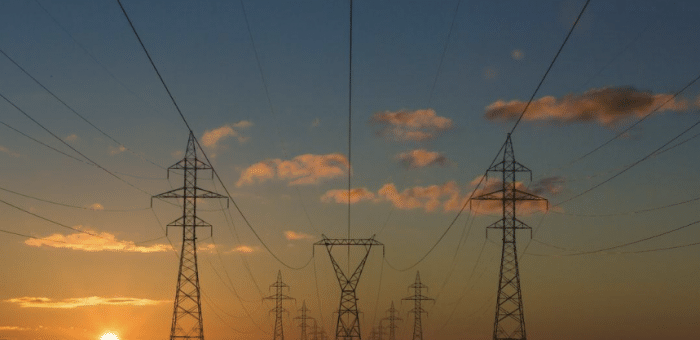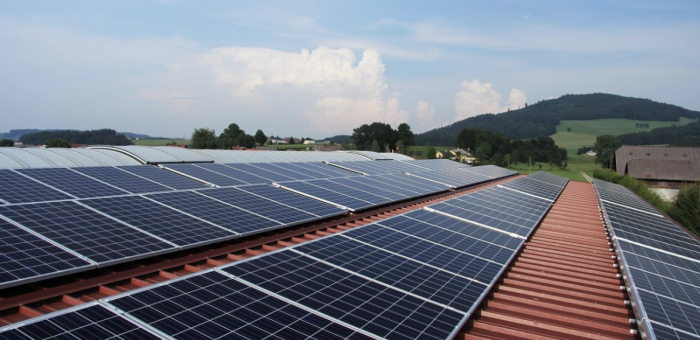Many countries, including the United States, rely on fossil fuels like petroleum, natural gas, coal, and hydrocarbon gas liquids as sources of energy. However, these non-renewable energy sources are limited in supply and contribute significantly to environmental pollution. Switching to green energy sources and sustainable practices offers the perfect solution to meet the world’s ever-growing energy consumption demands. Power Wizard can help you navigate the complexities of choosing affordable green energy by providing numerous energy solutions and tools.
Green energy sources help lower your carbon footprint by reducing carbon dioxide emissions.
Below is further insight into a few green energy resources, their cost, environmental impact, and how to pick a retail electricity provider with clean energy options.
Green energy resources and their costs
Green energy comes from abundant natural resources, such as wind, sunlight, and water. Electricity suppliers require different renewable energy technologies to harness wind energy, solar energy, and hydroelectric power. Advancements in these technologies allow consumers to exploit wind and solar power on a small scale for home use.
Wind energy
Wind power arises from the uneven heating of the atmosphere and the earth’s rotation. During the day, the air over land heats up quickly and rises while the cooler and heavier air from the sea rushes towards land to replace it. At night, the wind’s direction reverses as the air over the land cools more rapidly than the air over water.
Harnessing the unrestricted flow of air currents at offshore and high-altitude sites can be an excellent source of green energy. You can generate electricity from wind flow using wind turbines. Wind turbine blades first convert the wind’s kinetic energy to mechanical power. They then transmit the mechanical energy through the shaft to a generator that transforms it into electrical energy.
Wind flow is often unpredictable, as it can stop or start blowing too strongly at any time. Most wind turbines have a streamlined component called a nacelle that helps change the blade’s position depending on the wind’s direction. They also have a brake that slows the blades’ speed to prevent damage when the wind blows too strongly.
Windmill placement is influenced by hills, valleys, buildings, and forests within the local terrain. Picking the perfect spot where the wind blows consistently is crucial to harnessing this green energy source.
The ideal location needs to receive an annual average wind speed of about 13 miles per hour (mph) for utility-scale turbines and nine mph for small-scale residential use. Hilltops offer the perfect spot for establishing wind farms for bulk energy production.
Solar energy
The sun is an immense source of renewable green energy in the form of solar power that has existed for billions of years. Using photovoltaic (PV) solar panels, you can convert the sun’s radiation into electricity. Sunlight is made of solar particles called photons that carry different energy levels depending on the solar spectrum‘s wavelength.
When the photons hit the solar panel, it dislodges electrons present on the PV semiconductor material. The flow of electrons carrying a negative charge creates a charge imbalance between the front and back cell surfaces. This imbalance results in voltage potential, such as the positive and negative terminals in a battery.
The solar panel has electrical conductors that absorb these electrons. Once you link to an external load, electricity flows through the circuit. Small photovoltaic cells can produce about one or two watts to power small electronic devices like watches and power calculators.
PV cells are also grouped into PV arrays to produce enough direct current to charge solar batteries and power devices. Solar farms are a huge investment of PV arrays that can generate enough green power for residential and commercial industries. Wind energy contributed to about 9.2% of the U.S.’s entire utility-scale energy production in 2021.
Green energy is also produced from solar thermal power plants that collect and concentrate sunlight into heat energy. The three primary forms that exist include:
- linear concentrating systems,
- solar engine/dish systems, and
- solar power towers.
Solar thermal power technology essentially comprises reflectors that focus and capture solar particles into a receiver. The heat-transfer fluid in the receiver heats up to produce steam which circulates and powers a generator to produce electricity.
Hydroelectric power
hydroelectricity, or Hydroelectric power, is one of the oldest and most significant sources of green energy and harnesses the natural flow of water to produce electrical energy. Hydroelectric energy accounts for 7% of U.S. electricity production and 32% of total U.S. green energy generation.
Hydropower works by harnessing the potential energy arising from elevation differences in a dam or water diversion structure. The potential energy gets converted into kinetic energy as water flows into one side and out the other side. Hydroelectric power relies on the self-renewing water cycle to maintain green energy production.
There are three common forms of hydroelectric energy facilities. Impoundment facilities are the most popular, comprising dams that stop water flow in a reservoir. The dam channels and releases water to flow through turbines under the influence of gravity to generate electricity. Diversion hydroelectric systems also utilize a series of canals instead of a pool of water to direct water flow through turbines.
Pumped storage hydroelectric power collects and stores energy from wind or sunlight for future use. Some of the green energy helps to pump water to a higher elevation that stores latent energy. You can draw on this energy on-demand by releasing and harnessing the energy from flowing water.
Which green energy technology has the greatest environmental impact?
Despite hydroelectric power being a sustainable source of renewable electricity, it has the most damaging environmental impact of the three technologies discussed here. The creation of large water reservoirs comes at the cost of destroying the surrounding ecosystem of marshlands, grasslands, and forests.
The dams also displace wildlife and people in the area and interrupt the migration of spawning fish. And the restricted water flow further reduces the amount of suspended sediments flowing downstream that cause the scouring of riverbanks and riverbeds.
How clean energy technologies compare to conventional energy resources
The cost of energy produced from traditional fossil fuels is comparable to that of renewable sources.
Energy costs
The cost of electricity from fossil fuel plants varies between $0.05/kWh – $0.15/kWh. Meanwhile, hydropower energy costs an average of $0.05/kWh, with solar PVs and on-shore wind farms costing $0.10/kWh. Government-backed financial incentives further help lower the cost of investing in renewable energy.
According to the International Renewable Energy Agency (IRENA), the cost of solar photovoltaics and concentrating solar power systems has dropped by 82% and 47%, respectively. Lower prices improve the appeal of clean energy sources as a cost-effective investment.
Hydropower dams can store water at a low cost and deliver higher returns than intermittent energy sources. The hydropower plants can remain active for 50-100 years, with the sale of electricity over this duration being more than enough to recoup construction costs.
Energy efficiency
Green renewable energy is more efficient than non-renewable conventional energy sources. The energy harnessed from the sun, wind, and hydroelectric turbines naturally replenishes itself.
However, the efficiency of different green energy types varies with geographical technology and the superiority of renewable energy technology. Wind farms are currently one of the most efficient types of green energy sources that require less processing and refining than solar energy.
Wind turbines are about 50% efficient at converting wind power to electrical energy. They can achieve a theoretical optimal efficiency of 59%, called the Betz Limit. State-of-the-art PV modules are only about 20% efficient at converting solar energy to electricity.
How to find a green energy program near your
Numerous state-funded projects can help you invest in renewable energy. The U.S. Department of Energy’s State Energy Program provides technical assistance and funding to improve energy security and affordability. The U.S Department of Agriculture also offers grants and loans for energy efficiency improvement and renewable energy systems in Texas.
Choose an electricity provider with clean energy options
Renewable power sources provide a limitless supply of energy that can help reduce your dependence on fossil fuels. An energy producer qualifies for renewable utility-scale operations after generating at least 1 megawatt of electricity from green energy sources.
You can use Power Wizard’s DIY shopping tool to find the ideal electricity provider to meet your unique energy demands. You can also check out our kWh Calculator to discover the best electricity rates in your area.


